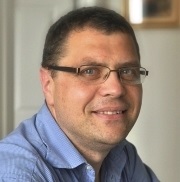
Daniel Irimia, M.D., Ph.D.
|
Investigator, Assoc Prof (M) SURG MGPO CEMS TONER, Mass General Research Institute |
|
Professor of Surgery Harvard Medical School |
Research Interests
Research Narrative
Neutrophils are the most common type of white blood cell in our blood. When one gets sick, they leave your blood and travel to where the infection is. They're like the first soldiers that fight against microbes.
Our goal is to measure how good neutrophils are at their job against microbes. For this, we engineered several tools that place neutrophils in controlled conditions and help compare neutrophils from healthy donors with neutrophils from patients. For example, we build microscale arenas where neutrophils fight against a small number of Staph aureus - a common microbe. Inside the arenas, as small as the width of a hair, we could see how neutrophil speed and precision are key to blocking the growth of the microbes. We also found that the microbes have a lot of ways to fight back, and the outcome of the neutrophil-microbe interactions is rarely predictable.
We also found that then when neutrophils encounter very large microbes, they team up and communicate with one another. This new finding, enabled by microscale tools built in our lab, that has never been contemplated in the one-hundred-year-old history of neutrophil research. This finding also helps us better understand how we are protected against invasive infections with fungi like Candida and Aspergillus. And while healthy individuals are well protected by their neutrophils against these invasive fungi, patients after transplant, patients with liver failure, patients after burns and trauma are not. Such infections could be deadly in half of those who develop them, despite the available antifungal drugs. Thus, our better understanding of neutrophil communications against the large microbes is essential towards developing novel preventive and therapeutic approaches for these patients.
Watch some of our recent movies of neutrophils doing amazing things inside the assays we are engineering: YouTube Channel
| dirimia@mgh.harvard.edu |
| 6177246543 |
|
CNY-Building #114 114 16th Street 1404 Charlestown, MA 02129 |
